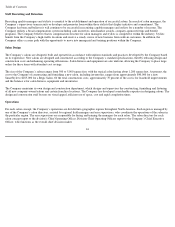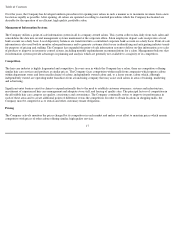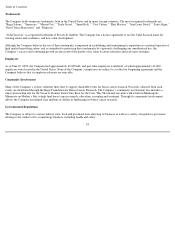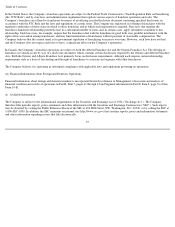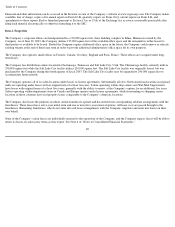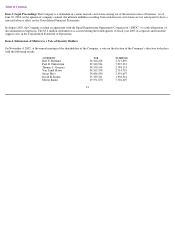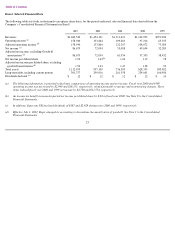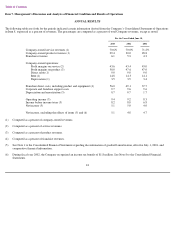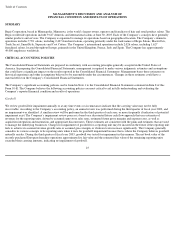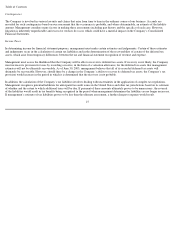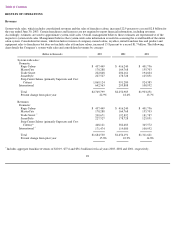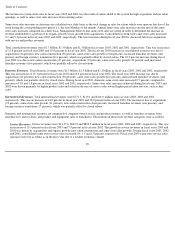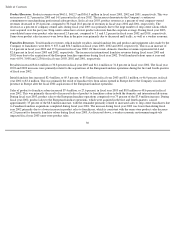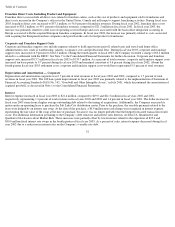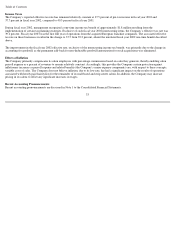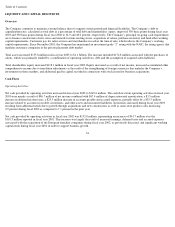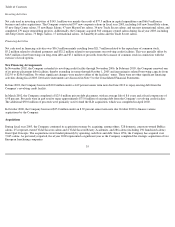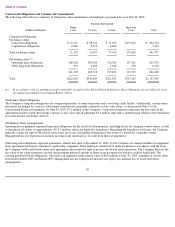Supercuts 2003 Annual Report Download - page 29
Download and view the complete annual report
Please find page 29 of the 2003 Supercuts annual report below. You can navigate through the pages in the report by either clicking on the pages listed below, or by using the keyword search tool below to find specific information within the annual report.
Table of Contents
Long
-Lived Assets
The Company assesses the impairment of long-lived assets annually or when events or changes in circumstances indicate that the carrying
value of the assets or the asset grouping may not be recoverable. Factors considered in deciding when to perform an impairment review include
significant under-performance of an individual salon in relation to expectations, significant economic or geographic trends, and significant
changes or planned changes in the Company’s use of the assets. Recoverability of assets that will continue to be used in our operations is
measured by comparing the carrying amount of the asset to the related total future net cash flows. If an asset’
s carrying value is not recoverable
through those cash flows, the asset grouping is considered to be impaired. The impairment is measured by the difference between the assets’
carrying amount and their fair value, based on the best information available, including market prices or discounted cash flow analysis.
Judgments made by management related to the expected useful lives of long-lived assets and the ability to realize undiscounted cash flows in
excess of the carrying amounts of such assets are affected by factors such as the ongoing maintenance and improvements of the assets, changes
in economic conditions and changes in operating performance. As the ongoing expected cash flows and carrying amounts of long-lived assets
are assessed, these factors could cause the Company to realize material impairment charges.
Purchase Price Allocation
The Company makes numerous acquisitions which are now required to be accounted for under the purchase method of accounting. Under the
purchase method, the purchase prices are allocated to assets acquired, including identifiable intangible assets, and liabilities assumed based on
their estimated fair values at the dates of acquisition. Fair value is estimated based on the amount for which the asset or liability could be
bought or sold in a current transaction between willing parties. For the Company’s acquisitions, the majority of the purchase price is accounted
for as residual goodwill rather than identifiable intangible assets. This stems from the value associated with the walk-in customer base of the
acquired salons, the value of which is not recorded as an identifiable intangible asset under current accounting guidance and the limited value
and customer preference associated with the acquired hair salon brand. Residual goodwill further represents the Company’s opportunity to
strategically combine the acquired business with the Company’
s existing structure to serve a greater number of customers through its expansion
strategies.
Cost of Product Used and Sold
Product costs are determined by applying estimated gross profit margins to service and product revenues, which are based on historical factors
including product pricing trends and estimated shrinkage. In addition, the estimated gross profit margin is adjusted based on the results of
physical inventory counts performed at least twice a year. During fiscal year 2003, the Company performed physical inventory counts in
September, January and March and adjusted its estimated gross profit margin to reflect the results of the observations. Significant changes in
product costs, volumes or shrinkage could have a material impact on the Company’s gross margin.
26


